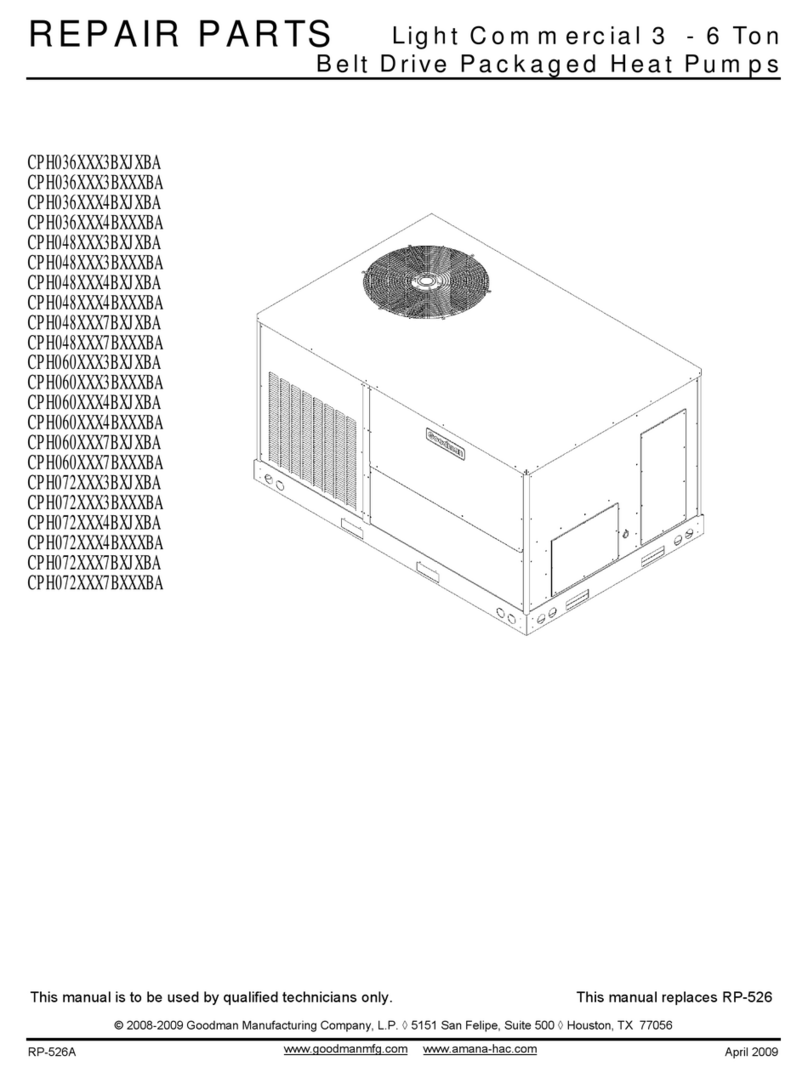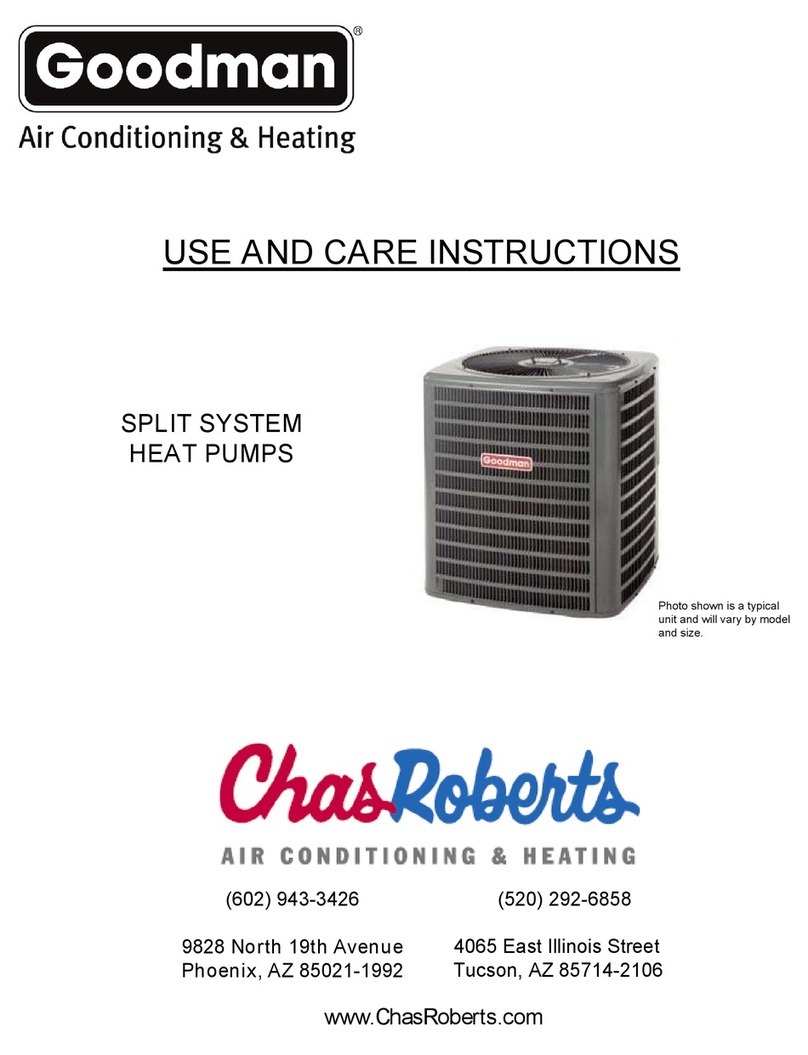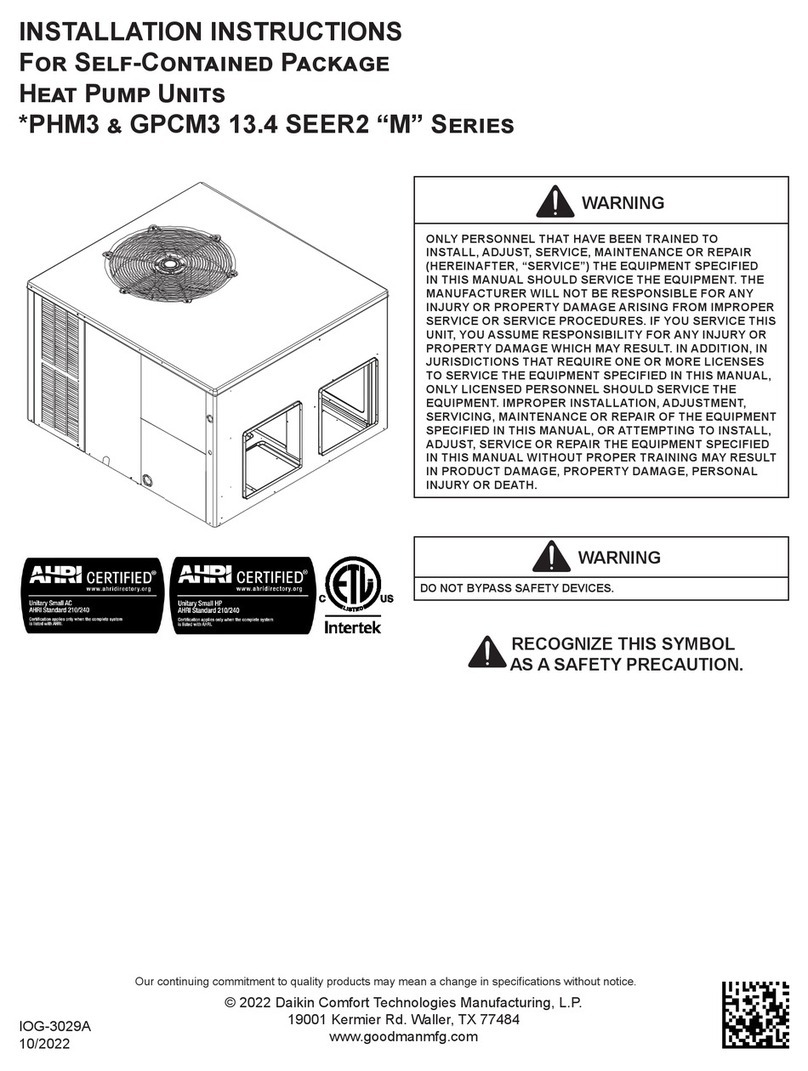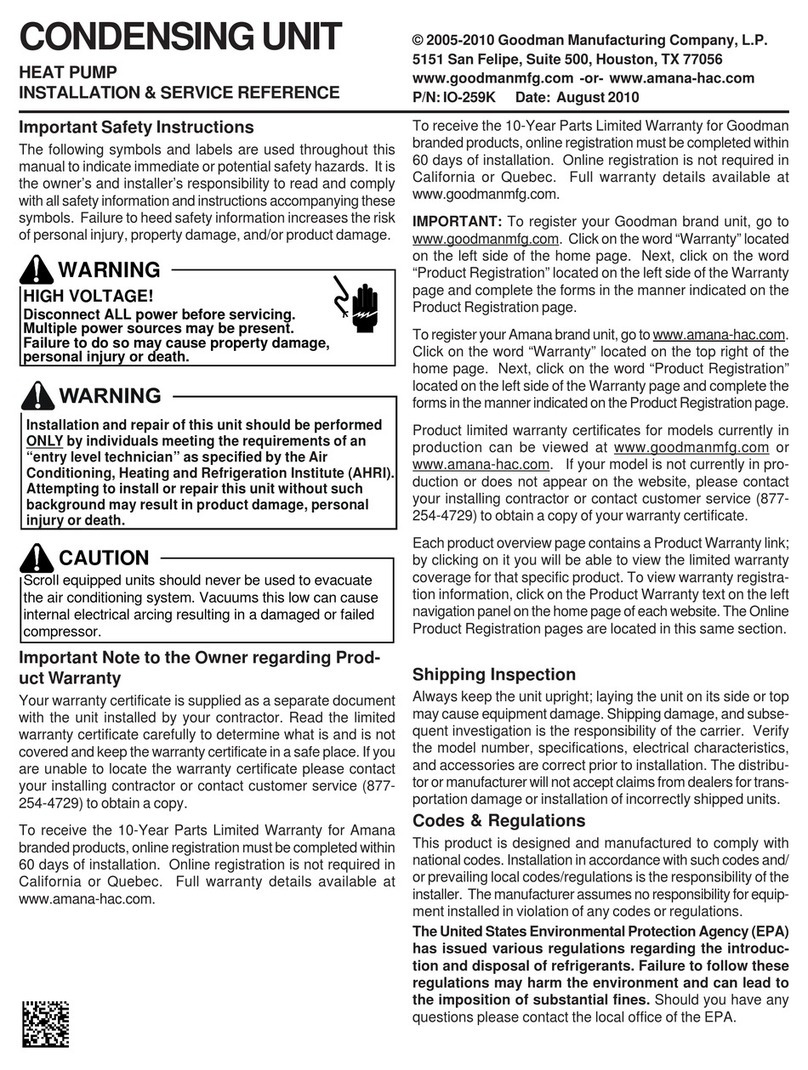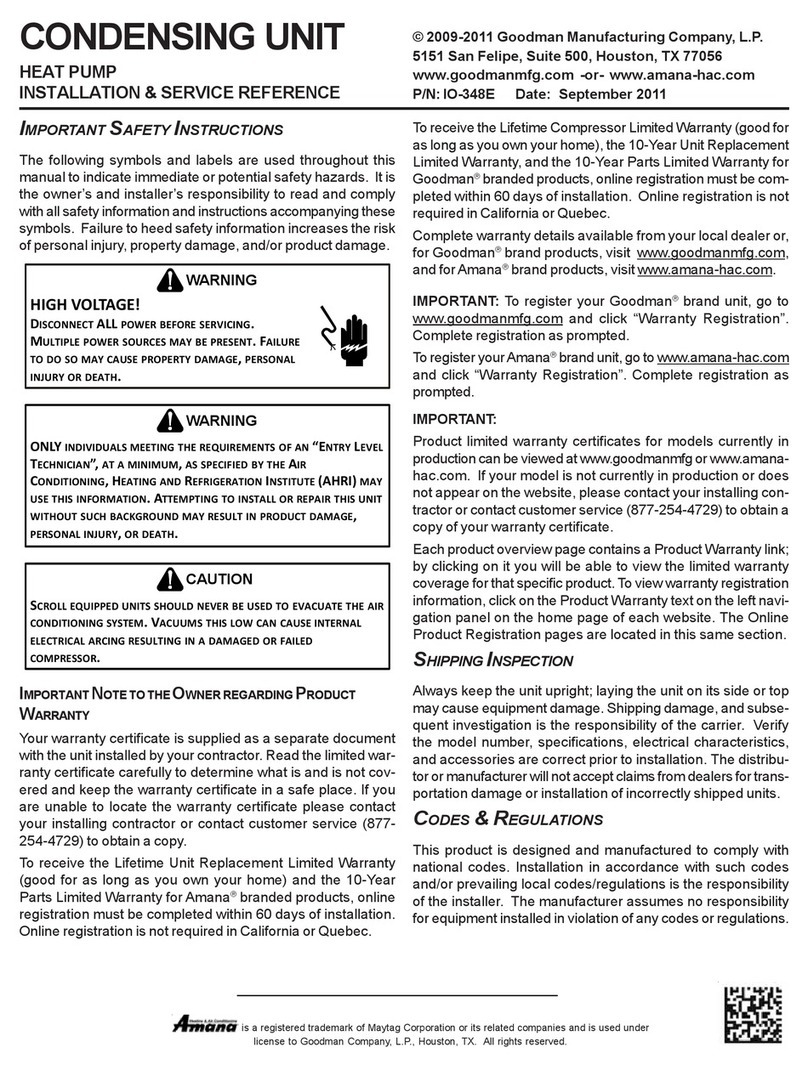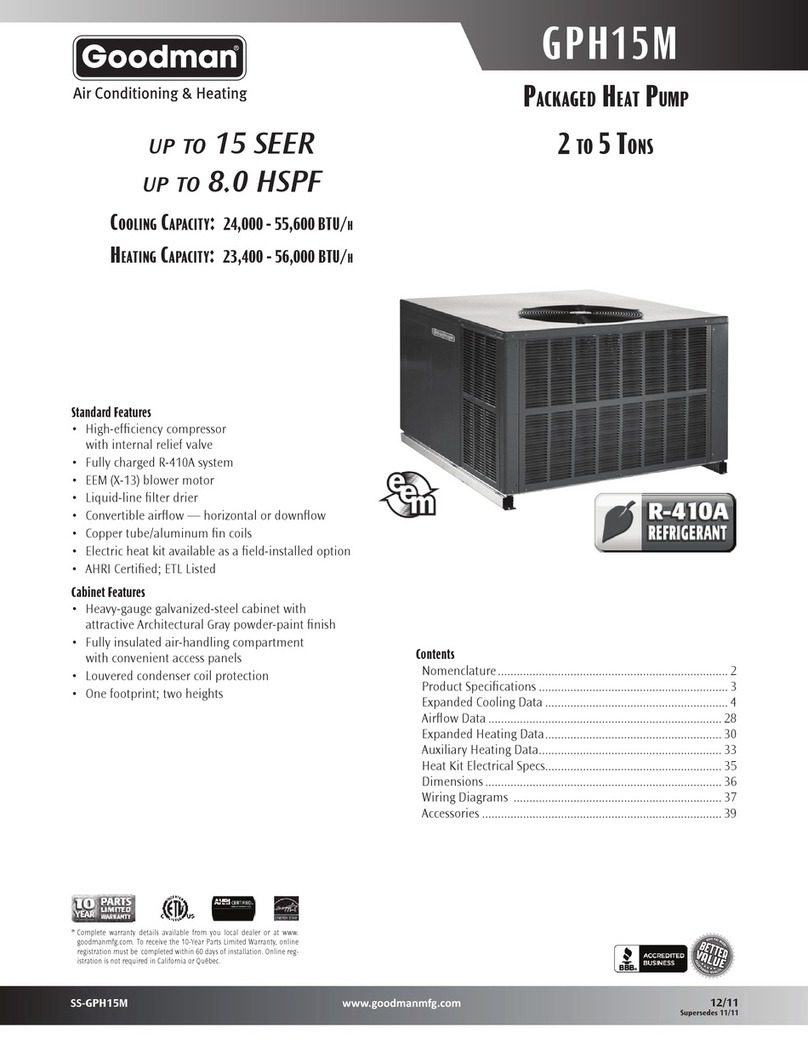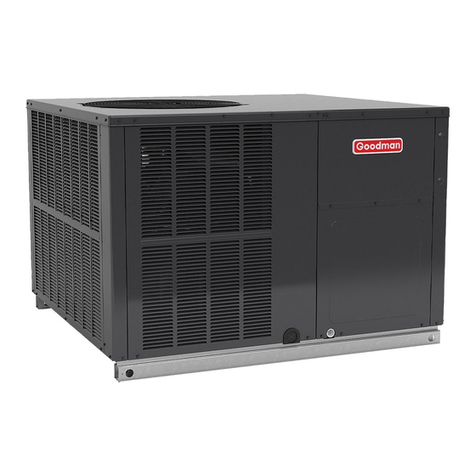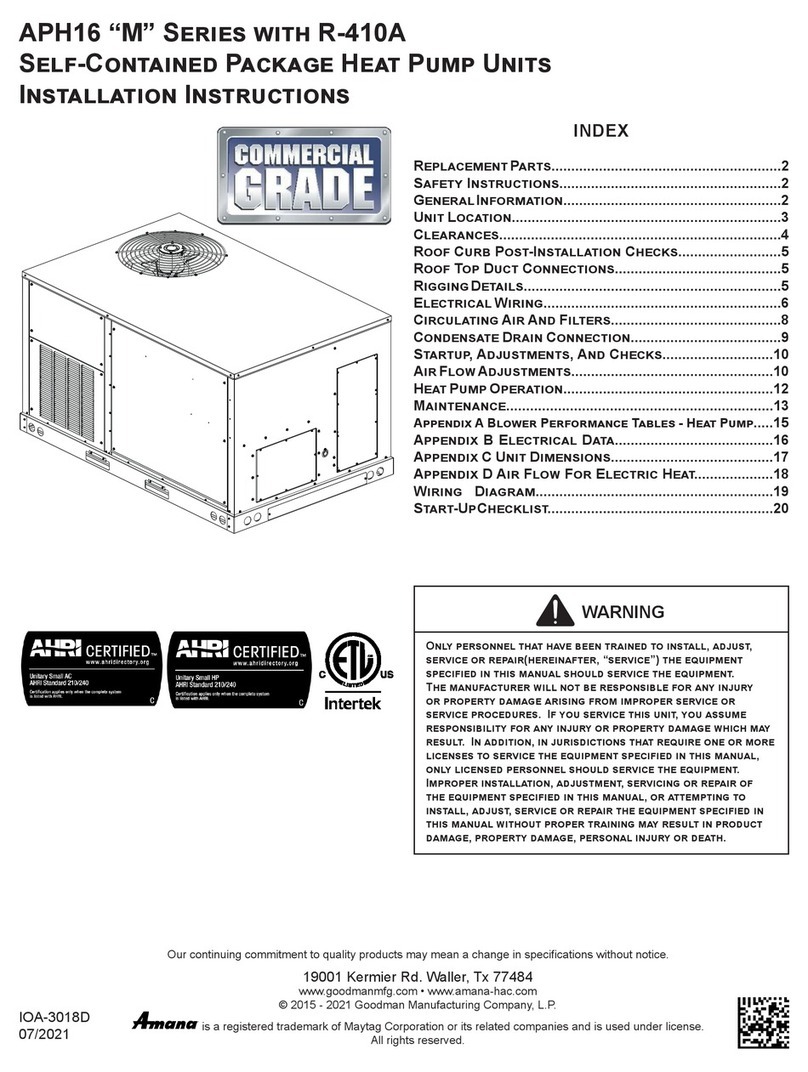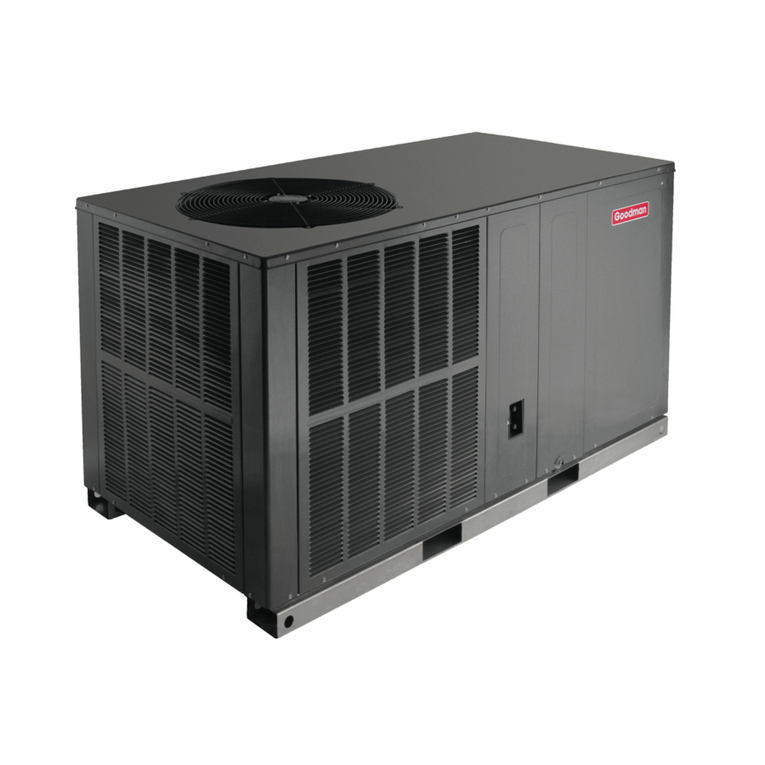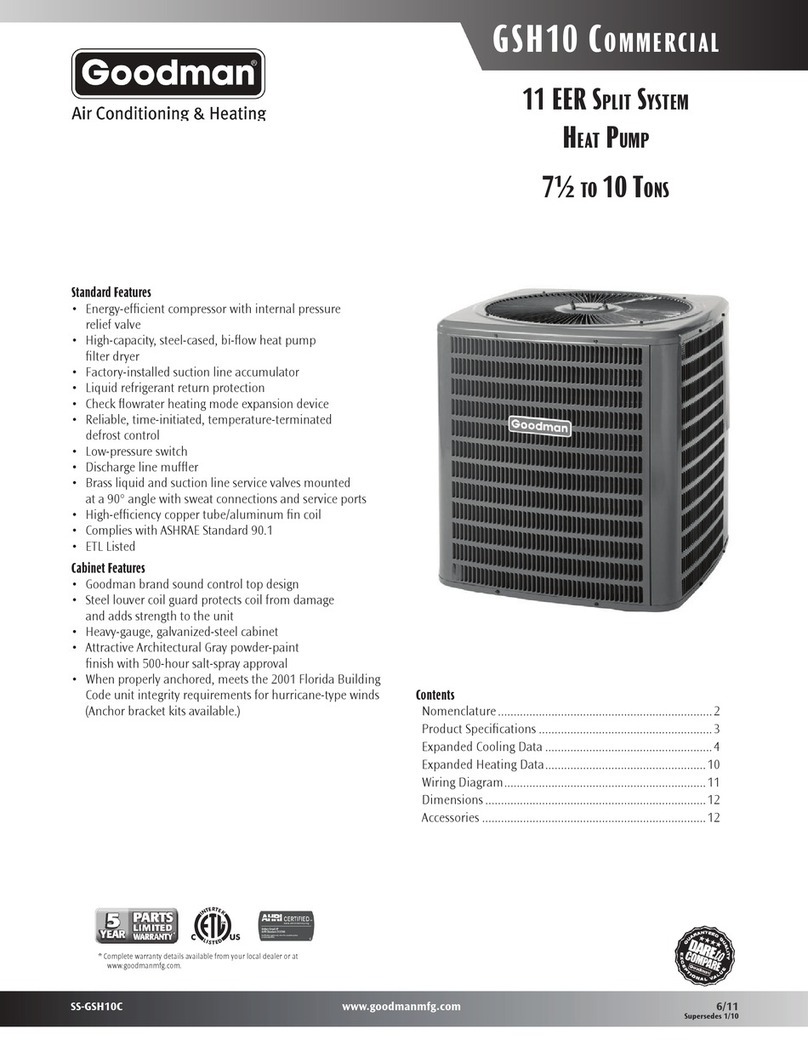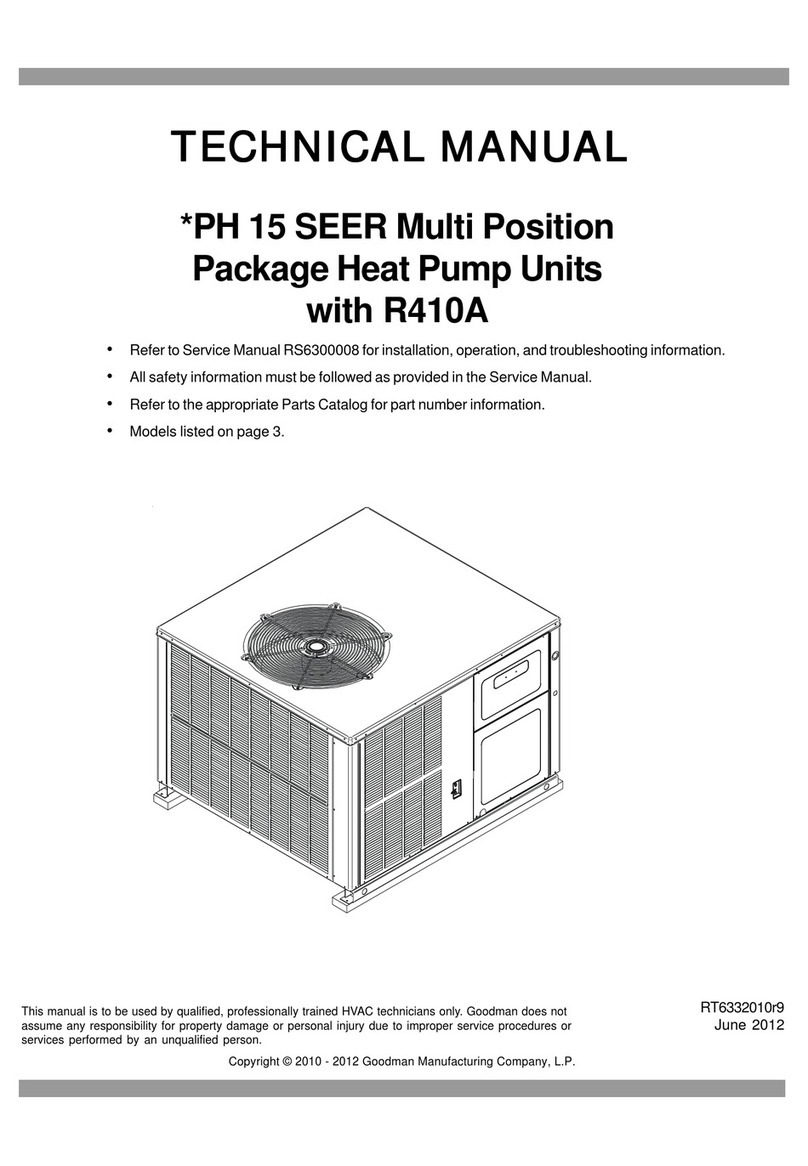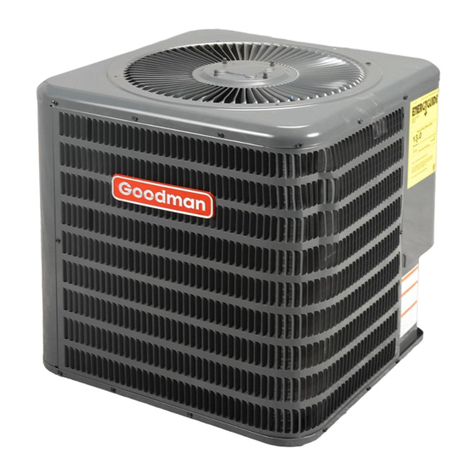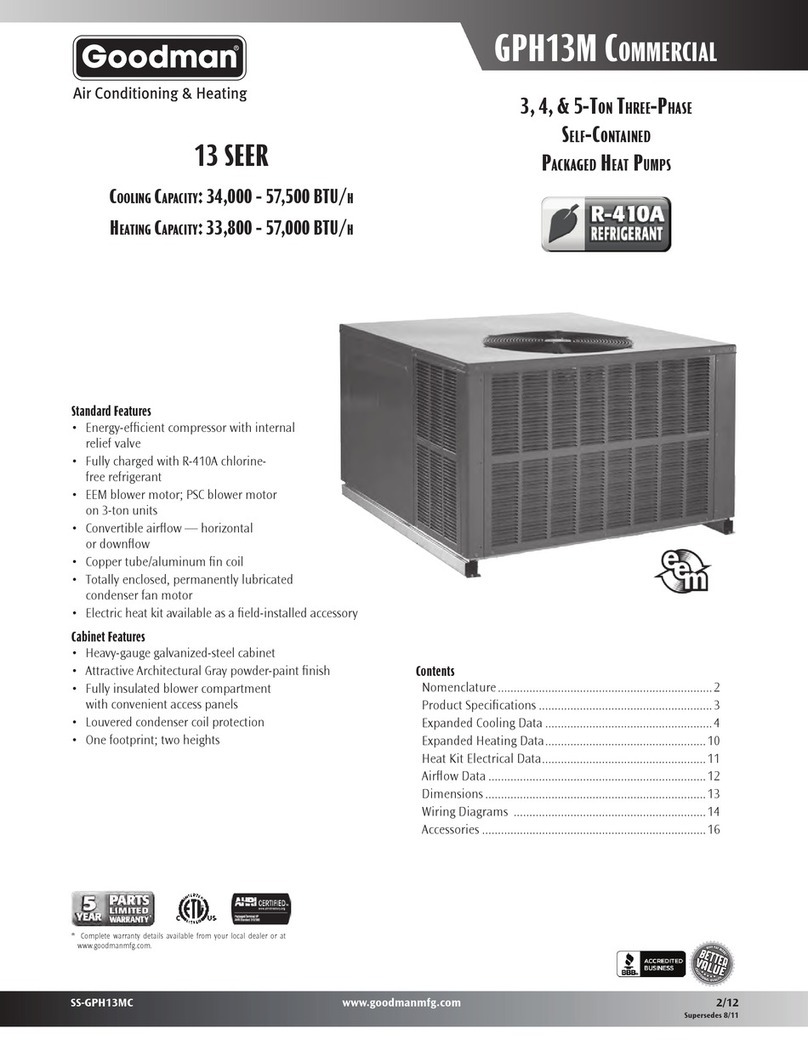
4
Refrigerant Line Connections
NOTICE
THIS UNIT IS SHIPPED WITH A NITROGEN/HELIUM
HOLDING CHARGE ONLY. UNIT MUST BE EVACUATED
AND CHARGED PER INSTALLATION INSTRUCTIONS
WITH REFRIGERANT LISTED ON SERIAL RATING PLATE.
NOTICE
UNITS SHIPPED WITH A HOLDING CHARGE ARE
INTENDED FOR COMPONENT REPLACEMENT ONLY ON
EXISTING SYSTEMS, AND NOT INTENDED FOR USE IN
NEW SYSTEMS OR NEWLY CONSTRUCTED HOMES.
EPA REGULATIONS PROHIBIT THE SALE OR
DISTRIBUTION OF APPLIANCES PRE-CHARGED WITH
THE REFRIGERANT R-22 IF THOSE APPLIANCES ARE
MANUFACTURED AFTER JANUARY 1, 2010.
COMPONENTS OF EXISTING R-22 SYSTEMS MAY BE
REPAIRED AND/OR REPLACED.
NOTICE
UNITS MUST ONLY BE USED AS REPLACEMENT
COMPONENTS FOR PRE-2010 INSTALLED SYSTEMS.
NOTE:Holdingchargemustberemovedbeforebrazing. Open
servicevalvesslowly to removeholdingcharge. Close valves
beforebrazingto prevent contaminantsfromentering system.
IMPORTANT
Toavoid overheating the service valve,TXVvalve,orfilter
drierwhilebrazing,wrapthecomponentwithawet rag, or
use a thermal heat trap compound. Be sure to follow the
manufacturer’s instruction when using the heat trap
compound.Note: Remove Schradervalves fromservice
valves before brazing tubes to the valves. Use a brazing
alloy of 2% minimum silver content. Do not use flux.
Torch heat required to braze tubes of various sizes is
proportionalto the sizeof the tube. Tubes ofsmaller size
requirelessheat to bringthetube to brazingtemperature
before adding brazing alloy. Applying too much heat to
any tube can melt the tube. Service personnel must use
the appropriate heat level for the size of the tube being
brazed. Note: The use of a heat shield when brazing is
recommendedtoavoidburningtheserialplateorthefinish
on the unit.
1. Theends of the refrigerant linesmust be cut square, de-
burred,cleaned,andberoundandfreefromnicksordents.
Anyothercondition increases thechanceofa refrigerant
leak.
2. “Sweep”therefrigerantlinewithnitrogenorinertgasdur-
ing brazing to prevent the formation of copper-oxide in-
side the refrigerant lines. This may cause a blockage or
failureofthemetering device.
3. After brazing, quench the joints with water or a wet cloth
toprevent overheating of theservicevalve.
4. Ensure thefilter drier paintfinishis intact afterbrazing. If
thepaintofthesteelfilterdrierhasbeenburnedorchipped,
repaintortreatwitharust preventative. This is especially
important on suction line filter driers which are continu-
ally wet when the unit is operating.
NOTE: Becareful not tokink or dentrefrigerantlines. Kinked
or dented lines will cause poor performance or compressor
damage.
Do NOT make final refrigerant line connection until plugs are
removedfrom refrigeranttubing.
NOTE: Before brazing, verify indoor piston size by checking
the piston kit chart packaged with indoor unit.
Leak Testing (Nitrogen or Nitrogen-Traced)
To avoid the risk of fire or explosion, never use
oxygen, high pressure air or flammable gases for leak
testing of a refrigeration system.
WARNING
To avoid possible explosion, the line from the
nitrogen cylinder must include a pressure regulator
and a pressure relief valve. The pressure relief valve
must be set to open at no more than 150 psig.
WARNING
Pressure test the system using dry nitrogen and soapy water
to locate leaks. If you wish to use a leak detector, charge the
system to 10 psi using the appropriate refrigerant then use
nitrogentofinishchargingthesystemtoworkingpressurethen
apply the detector to suspect areas. If leaks are found, repair
them. After repair, repeat the pressure test. If no leaks exist,
proceedto system evacuation.
System Evacuation
Condensingunit liquid and suction valves are closed to contain
the charge within the unit. The unit is shipped with the valve
stems closed and caps installed.
REFRIGERANT UNDER PRESSURE!
Failure to follow proper procedures may cause
property damage, personal injury or death.
NOTE: Scrollcompressors should neverbeused to evacuate
or pump down a heat pump or air conditioning system.
NOTICE
THIS UNIT IS SHIPPED WITH A NITROGEN/HELIUM
HOLDING CHARGE ONLY. UNIT MUST BE EVACUATED
AND CHARGED PER INSTALLATION INSTRUCTIONS
WITH REFRIGERANT LISTED ON SERIAL RATING PLATE.
